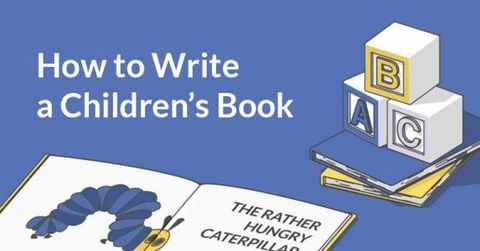The process of writing a book for children depends on several factors. With many differences regarding content for children and adults, the notion of children’s books is not as easy as it sounds. Many writers are clouded by the misconception that simplicity is the key to writing a book for children but it depends on many aspects. From keeping the book interesting to the incorporation of a moral lesson, you have to pay heed to every intricate detail that you can think of.
However, since the success of a book revolves around many factors, here is what you need to know about the creation of a book that sticks out for young readers:
1. Know your audience
Whether it is a book for adults or for children, you have to define the audience you are writing the book for first. Not knowing the demographics and preferences of your audience beforehand can lead to many shortcomings in the future. A children’s book, in particular, requires attention to detail, as children belonging to diverse age groups cannot prefer a single book. From the style of content to its tone, you have to thoroughly research in order to know your audience better. You need to be well versed about the preferences of your readers and categorize them according to their demographics and interests.
2. Use of illustrations
The key to success of a book is its ability to keep the reader engaged and interested at all times. However, children happen to be difficult readers and text alone would not intrigue them. You have to use illustrations and drawings in your book to enhance its levels of readability. Keeping the content tone simple with appealing illustrations always works for children’s books. If you have brought balance in both the content and illustrations, then your readers will not surely lose interest. Make sure not to bloat your book with text and use short sentences along with illustrations relevant to it. You do not have to be an illustrator yourself instead; you can collaborate with an children book illustrator and allow them to simplify the process of illustration design for your book.
3. Storyboarding
If you happen to be working with an illustrator then it is recommended to work alongside them throughout the creation of your book. You can provide your chosen illustrator with a brief draft of the story and then allow them to sketch out a quick overview of your preferred illustration. Some consider it an arduous process but in reality, it is not. If you skip this step, then it will lead to many loopholes later on and it would become difficult for you to cater to every issue single-handedly. Every intricate detail is essential in a children’s book as children are meticulous readers and they tend to pay attention to everything. That is why be thorough with the storyboarding and illustration design if you want the finished product to stick out.
4. Artwork Creation
You can test out the creation of the artwork yourself or you can always rely on a professional illustrator. Writers prefer the latter more as it allows them to acquire professionally designed illustrations while they focus on content creation. Content creation and illustration design work hand in hand so the process of artwork creation also depends on the preference of the writer. Research well and analyze what sort of art style would fit for your book. Digital illustrations are more prominent now and the use of traditionally designed illustrations is considered outdated. Ultimately, Make sure the illustrations are expressive and enliven emotion in the mind of your reader.
5. Simplicity
Children prefer simple designs and mundane colors so if you want to capture their attention you need to keep your illustrations simple and imaginative. Children tend to dislike complex visuals but they still want the images to be unique and distinctive. The design is not the only factor that has to be simple as the use of unfamiliar vocabulary also makes them lose interest in the book. Young children tend to like words that rhyme but not every child has the same liking. However, keep the sentences simple and short with illustrations on every page.
6. Stories with a lesson
Not every children’s book has the same topic but they have the power to evoke their imaginative abilities. Try to choose a topic that provokes their creativity and allows them to learn new things. The use of complex vocabulary is strictly restricted but you can use new words that hone their vocabulary. However, focusing on academic lessons alone would make it too bland for the young readers. You have to balance between the need to incorporate moral lessons and the use of an interesting story. Most books for young readers have a moral lesson as it allows them to groom their behavior and mannerisms.
7. Work with a professional publisher
At times writers do not know the process of publishing a book. If you believe you are satisfied with the final product and you wish to publish it then you have the opportunity to get assistance from a professional publisher. A publisher will help you in case of any shortcomings in your book and will even provide you with information regarding the genres that are currently trending. Your book is another contribution to the realm of the book industry and if you are unsure about the publication process then book publishers are always there to help.
8. Wrapping Up
It is a mere misconception to assume that writing a children’s book is a simple endeavor. From the storyboarding process to the creation of artwork, various steps are involved in the formation of a successful children’s book. You have to be meticulous and accurate in every phase of the content you create. For that purpose, utmost dedication and exertion of efforts is required from both the writer and the illustrator and in turn, you would be able to change the way young, passionate readers perceive books.
